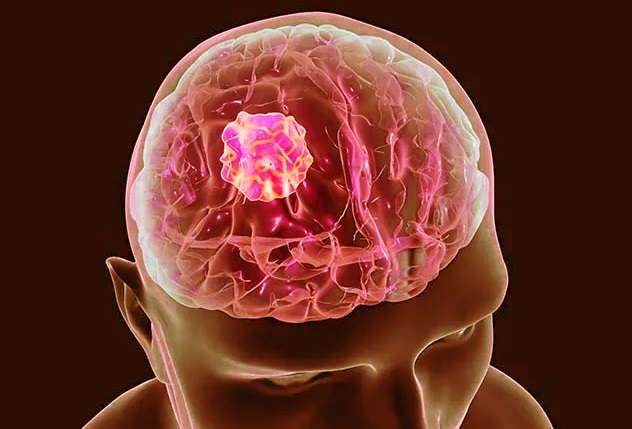Malignant Glioma Treatment More Complex Than Ever with Tumors Evolving into Hyper Intelligent Networks
Nikhil Prasad Fact checked by:Thailand Medical News Team Apr 14, 2025 1 day, 9 hours, 57 minutes ago
Medical News: New Research Shows Why Malignant Gliomas Remain Lethal Despite Advanced Therapies
In a groundbreaking new review by scientists from multiple top-tier European institutions, researchers have outlined why malignant gliomas—especially glioblastoma multiforme (GBM)—continue to evade even the most advanced therapies. The research was carried out by teams from the Immun-Onkologisches Zentrum Köln in Germany, the Princess Máxima Center for Pediatric Oncology and Erasmus Medical Center in The Netherlands, Bambino Gesù Children’s Hospital in Italy, University Hospital Würzburg in Germany, the National Cancer Institute in Milan, and University Hospital Mannheim in Germany.
 Malignant Glioma Treatment More Complex Than Ever with Tumors Evolving into Hyper Intelligent Networks
Malignant Glioma Treatment More Complex Than Ever with Tumors Evolving into Hyper Intelligent Networks
This
Medical News report dives deep into how malignant gliomas are not just tumors but intelligent, adaptive ecosystems that continuously shift and evolve, making traditional treatment approaches outdated and often ineffective.
Why Glioblastoma Is So Hard to Treat
Glioblastoma, the most aggressive type of brain tumor in adults, remains one of the deadliest cancers with very limited treatment options. Standard therapies like surgery, radiotherapy, and chemotherapy often provide only temporary relief. The study reveals that the tumor’s “microenvironment”—a dynamic network of cancerous and non-cancerous cells, immune components, blood vessels, and even neurons—is the key reason behind its resistance to therapies.
What makes matters worse is that this tumor environment is not static. It changes over time and differs from patient to patient, meaning a one-size-fits-all treatment approach is largely ineffective. Tumors grow using several complex biological strategies, including oxygen starvation tactics (hypoxia), immune suppression, and even direct communication with nerve cells in the brain to enhance their survival and spread.
Five Key Hallmarks Driving Tumor Resistance
The study highlights five main features that fuel glioma growth and resistance:
-Glioma Stem-like Cells (GSCs): These are a tiny fraction of the tumor cells but possess the ability to self-renew and resist treatment. Conventional therapies like radiotherapy and the chemotherapy drug temozolomide (TMZ) often fail to destroy GSCs. Shockingly, some antidepressant drugs like imipramine and amitriptyline were found to reduce GSC activity, offering a surprising new direction for therapy.
-Hypoxia and Irregular Blood Supply: Tumors create abnormal blood vessels that limit oxygen delivery, a condition known as hypoxia. This makes radiotherapy less effective and causes cancer cells to adapt and survive through alternate metabolic pathways. Drugs like chloroquine, melatonin, and the anti-parasitic drug mebendazole were shown to target these hypoxic pathways effectively.&l
t;br />
-Metabolic Reprogramming: Glioma cells rewire their metabolism to survive in harsh conditions, often relying on anaerobic pathways and scavenging resources from surrounding cells. The researchers point out that drugs like metformin (commonly used for diabetes) could help reverse this metabolic shift and enhance the effectiveness of traditional chemotherapy.
-Immune Suppression and Inflammation: The tumor creates a hostile environment that suppresses the body’s immune response. Special immune cells called GAMs (glioma-associated macrophages) play a key role in this suppression. Treatments targeting immune checkpoints like PD-L1 and immunomodulatory drugs such as curcumin, risedronate, and ONC201 show promise in reversing these effects.
-Neuron-Glioma Communication: Perhaps the most shocking finding is that glioma cells can form actual synapses—connections similar to those between neurons. Through this interaction, the tumor receives electrical and chemical signals from neurons that promote its growth. Drugs like perampanel and levetiracetam, which affect brain signaling, could potentially disrupt this deadly communication.
A Call for Personalized and Multi-Phase Treatments
The study proposes that instead of relying on single-treatment protocols, clinicians should shift to dynamic, personalized, and multi-phase treatment plans that evolve with the tumor. New technologies like single-cell sequencing and advanced imaging can help monitor these changes in real-time, allowing for more responsive and effective interventions.
For pediatric gliomas, which often have different genetic and immune profiles, the study stresses the importance of tailoring treatments specifically for younger patients. Pediatric gliomas tend to have fewer mutations but can be equally aggressive. Some promising therapies include ONC201, which targets both dopamine receptors and mitochondrial pathways, and combination therapies that limit toxic effects on the developing brain.
Conclusion
This extensive review makes it clear that malignant gliomas are not just tumors but highly organized and intelligent biological systems. Their ability to resist treatment comes from their adaptability, complex internal communication, and dynamic tumor environment. The key to future success lies in personalized therapies that can adapt in real-time, target multiple cancer hallmarks simultaneously, and consider the patient's unique tumor biology. By treating gliomas as evolving systems rather than static masses, medicine may finally gain the upper hand in this deadly battle.
The study findings were published in the peer-reviewed journal: Cancers.
https://www.mdpi.com/2072-6694/17/5/879
For the latest Cancer News, keep on logging to Thailand
Medical News.
Read Also:
https://www.thailandmedical.news/news/covid-19-and-glioblastoma-onset
https://www.thailandmedical.news/news/why-glioblastoma-continues-to-defy-treatment-even-with-the-best-drugs-and-radiation
https://www.thailandmedical.news/news/french-and-swiss-scientist-develop-engineered-natural-killer-cells-for-treating-glioblastoma
https://www.thailandmedical.news/pages/thailand_doctors_listings
https://www.thailandmedical.news/articles/cancer
